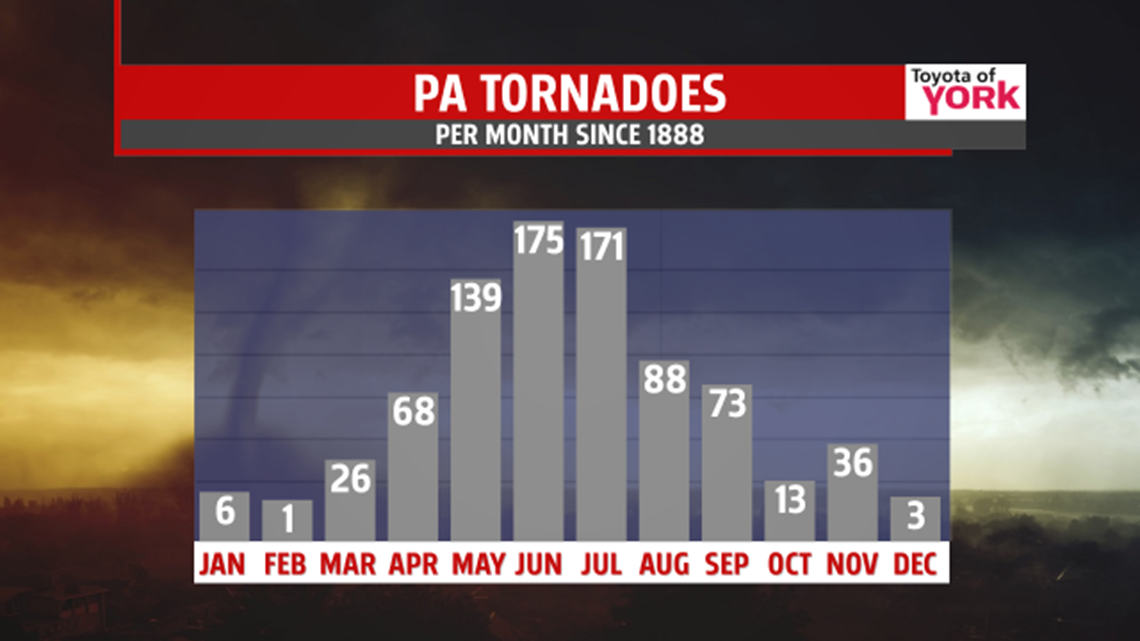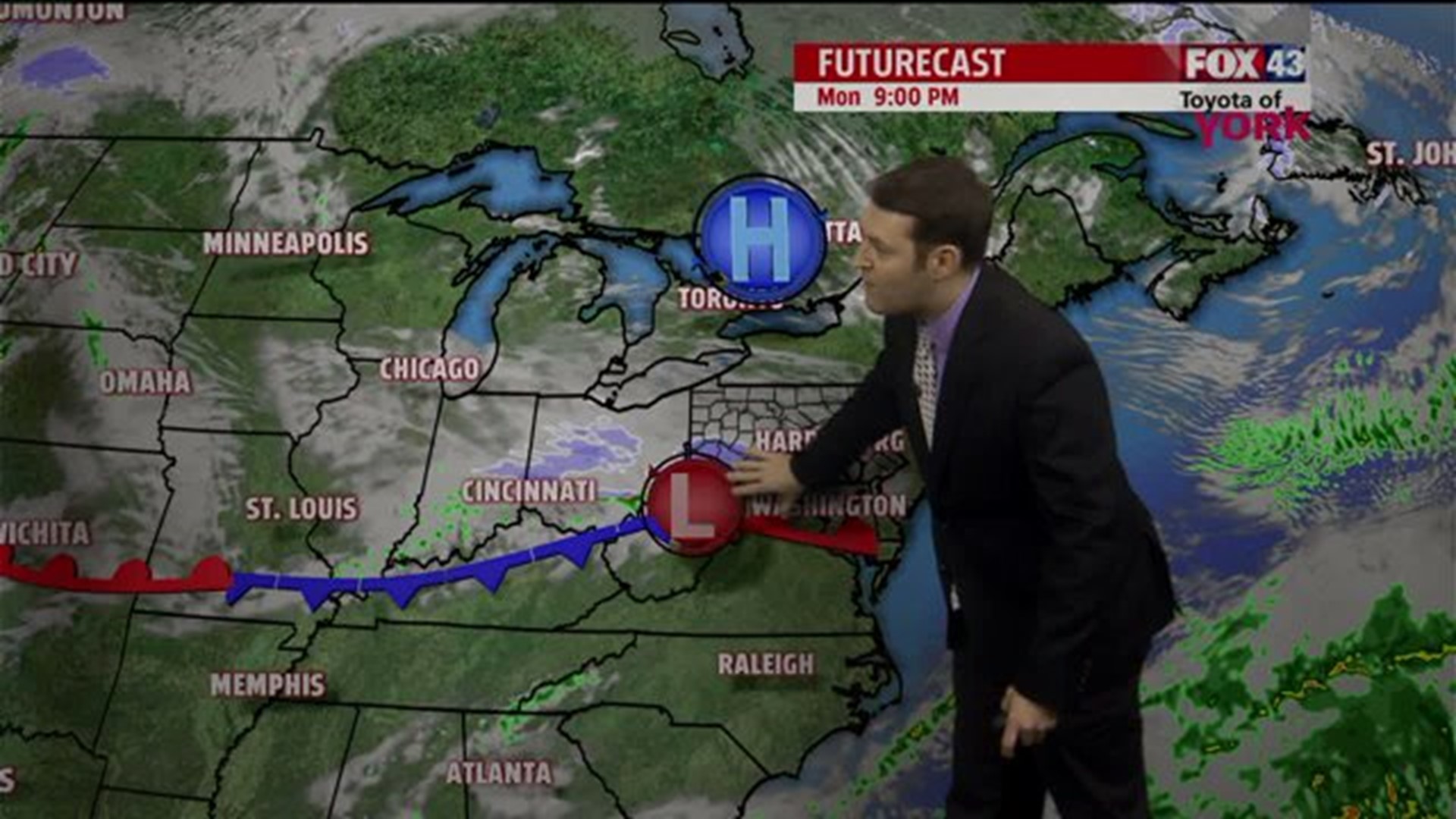It’s Severe Weather Awareness week in Pennsylvania. Each day of the week is dedicated to increasing awareness on severe weather common to our commonwealth. Monday is dedicated to tornadoes and safety. We’ll discuss some PA tornado facts and give you some safety tips below!
Every county in our viewing area has seen a tornado. History shows tornadoes have spawned in every month of the year in PA; however, we peak in May, June, and July when the atmospheric set up is prime. The peak times for tornadoes to move through are the afternoon hours; however, tornadoes are possible at any time of the day. So it’s imperative to be prepared for severe weather.


A tornado watch is issued when conditions are favorable for severe thunderstorms capable of forming tornadoes. These typically last 6-8 hours and cover a large geographical area. A designation of PDS or Particularly Dangerous Situation is given to a watch where tornadoes are expected to be long lived or violent intensity. When a watch is issued, you should be prepared to take action in the event of a warning and ensure you have immediate access to breaking weather information. On average, we have three tornado watch days in the Susquehanna Valley annually.
A tornado warning is issued when a tornado is imminent or already occurring. Tornado warnings can be issued when a tornado is spotted on the ground, or more often when indicated by radar. These are based on the storm path and may cover several counties. These typically last 30-60 minutes, and most often are 45 minutes. When a tornado warning is issued, you should take immediate action to ensure your safety and the safety of others.
Here are some tips to help keep you safe.
- Get to the lowest floor of your home or office. A basement is ideal.
- Go to the most central, interior room of your home, away from doors and windows.
- Put as many walls between you and the tornado as possible.
- Wear a helmet. Any helmet will do, but fully enclosed helmets are best. Recent research has shown that most injury/deaths from tornadoes occur from head trauma.
- If you’re in an office, an interior stairwell is often best.
- If you are in a car, try not to outrun the tornado. Pull over, get out, and find a ditch or low area. Cover your head and lie flat.
- If you live in a mobile home, try to find a sturdy building or find access to a storm shelter when a tornado watch is issued. If a tornado is imminent, evacuate and find shelter in a low area.
- Avoid overpasses on roadways for shelter.
- Do not open doors or windows.
For more information, visit the NWS State College Severe Weather Awareness page HERE.
Stay safe!
- Jeff Jumper, FOX43 Morning Meteorologist
Follow me on Twitter: @JeffJumperWX
Like me on Facebook: Jeff Jumper FOX43

